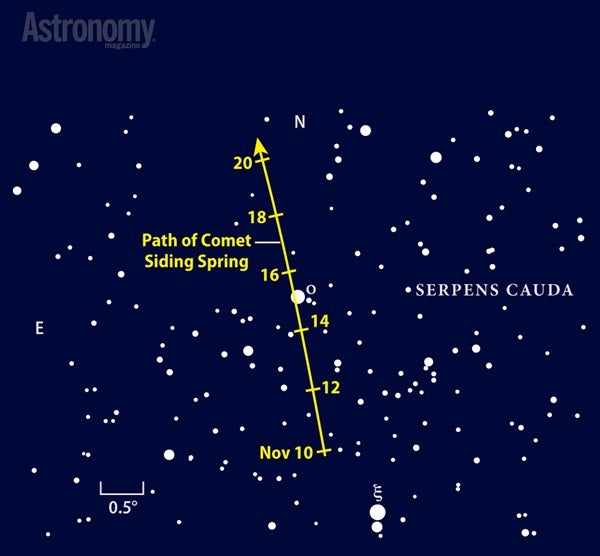Longtime comet fans will recall Comet Hyakutake (C/1996 B2), which passed close to Earth in 1996 — but still 100 times farther away than Siding Spring buzzed Mars. This means that Siding Spring 2 would be about 100 times wider on the sky than Hyakutake, cover 10,000 times more area on the sky, and move about 100 times faster.
The encounter would be over in a night — and you’d better be on the right side of the planet at closest approach. But then comes something even more mind-blowing: the meteor shower! Based on our results from NASA’s MAVEN spacecraft orbiting Mars, Comet Siding Spring caused a meteor shower on the Red Planet more intense than any in recorded history on Earth, with the possible exception of the Leonids in 1833.
The zenithal hourly rates might have been as high as thousands or tens of thousands of meteors per hour, meaning several or many shooting stars in the sky at once. And it went on like this for hours — truly mind-blowing. For days afterward, the twilight sky would glow from sodium and other metals stripped from comet dust high in the atmosphere.
As far as we know, there weren’t any major long-lasting effects on Mars, and there probably wouldn’t be on Earth either. The cometary gases striking the atmosphere would be broken down to their constituent atoms and then mixed in with the rest of our gases. The total mass deposited might be a few tens of tons, not very much when distributed globally. Perhaps some interesting chemistry might happen in the upper atmosphere from the smorgasbord of comet gases, the same kind that makes “meteoric smoke” from all the meteors that burn up in our atmosphere on a regular basis.
And what would come after that? Special issue(s) of Astronomy galore!
Laboratory for Atmospheric and Space Physics
University of Colorado Boulder










